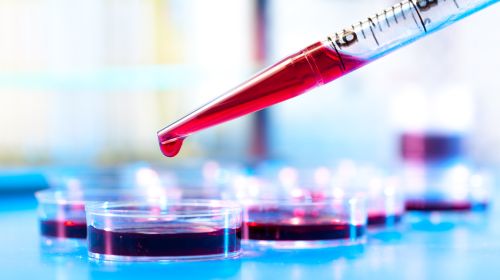The bacterial infectious disease brucellosis is rare in Germany, but you can get infected by consuming raw meat and dairy products. The symptoms of an infection and how brucellosis is treated.
- Brucellosis can be transmitted through raw meat infected with Brucella.
- © Getty Images / kajakiki
Article content at a glance:
What is brucellosis?
Brucellosis is a reportable infectious disease that is caused by gram-negative bacteria of the genus Brucellen. The following pathogens occur frequently: Brucella suis, Brucella abortus, Brucella melitensis and Brucella canis. If the brucellosis is caused by the pathogen Brucella melitensis, it is also called Malta fever or Mediterranean fever.
Since the pathogens are transmitted from animals to humans, brucellosis is a zoonosis. Usually domestic and farm animals such as dogs, sheep, goats and cattle are affected. The transmission occurs either through close contact between humans and infected animals or through the consumption of milk and meat products that have been raw or not sufficiently heated or pasteurized. It is rarely transmitted from person to person – previous cases have been reported during breastfeeding and in individual cases through bone marrow transplants or blood transfusions.
Symptoms of Brucellosis
In most cases, brucellosis has only mild symptoms or no symptoms at all. The fact that an infection is present in this asymptomatic course can only be confirmed by the detection of appropriate antibodies in the blood.
Acute brucellosis may show these symptoms:
If the infection is not recognized and treated, it can become chronic. This often manifests itself through unspecific general symptoms such as decreased performance, sweating and depressive episodes. In addition, inflammations often occur in the vertebrae (spondylitis) and the skin of the eye (uveitids).
Diagnosis of brucellosis by the doctor
First, the doctor will ask about possible symptoms as part of the anamnesis. If brucellosis is suspected, the blood is examined in the laboratory for antibodies and inflammation markers. Cultures are usually grown from the blood in the laboratory – after about two to four days, colonies form on the nutrient medium.
Depending on the location of the inflammation, other organs and fluids can also be examined, such as urine, spinal fluid, bone marrow or liver.
Treat brucellosis
To treat brucellosis, antibiotics are usually used for six to twelve weeks – the active ingredients rifampicin and doxycycline are usually combined. If organs, bones or joints are already affected, other active ingredients may come into play, and the treatment period is usually extended in these severe cases.
Children and pregnant women should not be treated with the active ingredient doxycycline; alternatively, they receive a combination treatment of co-trimoxazole and rifampicin.
How can you prevent brucellosis?
So far there is no vaccination against brucellosis for humans. Cattle, sheep and goats are officially free from brucellosis in Germany. In the endemic regions of the Mediterranean, Arabian Peninsula, Africa, Asia, Central and South America, however, the situation is different. Therefore, in these countries one should avoid eating raw meat if possible and only consume pasteurized milk and dairy products.
Because brucellosis can be transmitted through breast milk, sick women are not allowed to breastfeed. Only when the milk has been boiled can it be fed to the baby. Persons in contact with sick people do not have to take any special protective measures – if the usual hygiene measures are observed, isolation is not necessary. Anyone who has professional contact with pets and farm animals should wear protective gloves and ensure thorough hand hygiene.


